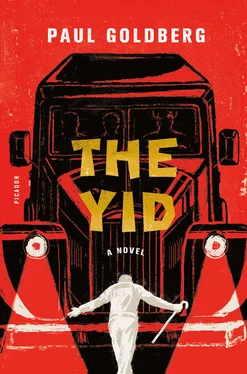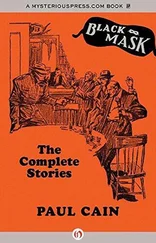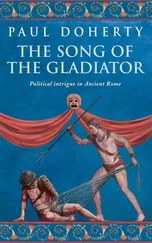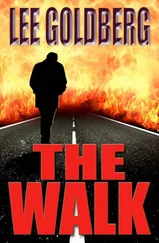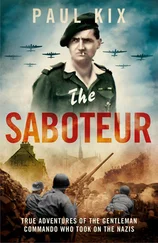Soon after he was admitted, Yurovsky woke up, finding a hand-scribbled note on his pillow.
This wasn’t, strictly speaking, a threat. It was an excerpt from Pushkin’s Boris Godunov, his usurper’s soliloquy:
… Kak yazvoy morovoy,
Dusha sgorit, nal’yetsya serdtse yadom,
Kak molotkom stuchit v ushakh upryokom,
I vse toshnit, I golova kruzhitsya,
I mal’chiki krovavyye v glazakh …
I rad bezhat’, da nekuda … uzhasno!
Da, zhalok tot, v kom sovest’ nechista.
(… Raging pestilence
Will burn the soul, and poison fill the heart,
Reproach assault the ears with hammer-blows,
And spinning head, and rising nausea,
And blood-bathed boys appear before the eyes …
How glad I’d be to flee — but where?… Horrible!
Oh, pity him whose conscience is unclean!)
Yurovsky thought this note was a threat. (Of course, it was.) And he lost sleep out of fear that a fellow assassin would come to even the score.
And nurses feared being summoned to his bed.
* * *
Following the Nizhegorod Street, the Black Maria reaches the Abelman Fortification, then takes Taganskaya Street past the Birds’ Market, across Taganskaya Square. It’s 3:21 a.m.
Moscow embraces them. This isn’t self-deception. They feel its welcome in exactly the same way, with chills that uniformly run down their necks and up again. No metaphor here: a city lives, it feels, it takes your likenesses and your souls. It gives as much as you can take. When you come home, it’s to a waltz.
There is a prison here — Matrosskaya Tishina. Look again.
Now a secret: if you succeed, a theater will open at this spot — here — eleven years from now, in 1964. The first performance will be Bertolt Brecht’s The Good Woman of Setzuan.
Seize the day and see the curtain rise as Moscow’s honored guests. And if you fail, the city will die with you, implode, dissolve, become a Troy. These are the stakes.
Kogan and Lewis sit on opposite benches, staring past each other. Lights from oncoming cars (mostly Black Marias) occasionally blink through the small, barred window of their cage.
KOGAN: Lewis, how do you picture Stalin?
LEWIS: An alter kaker. [Old shitter.]
KOGAN: The same as me and der komandir ?
LEWIS: Maybe. Much older, though.
Kogan slams his fist on the window designed to separate the prisoners from the guards.
KOGAN: Solomon, what did you think of Lir?
LEVINSON: The character or the play?
KOGAN: The character.
LEVINSON: I hated him.
KOGAN: Do you think Lir deserves the tsuris he gets?
LEVINSON: He does, and how!
KOGAN: It could be the translation. Tanya complained, remember? Lewis, how did it sound to you?
LEWIS: I can’t compare. Mikhoels was the only Lir I saw.
LEVINSON: Lir has no right to be a king. He speaks such nonsense! I despise him more and more as it progresses. And in the end, he is completely weak, prostrate. How is that good?
* * *
The path of the Black Maria runs through Moscow’s heart: Upper Radischev Street, the Street of the International, the bridge over the Yauza River, Yauzsky Boulevard, Pokrovsky Boulevard.
Then, at Chistoprudnyy Boulevard and Sretensky Boulevard, they turn right onto Malaya Lubyanka, and, with surprising lack of trepidation, they pass Lubyanskaya Square, past the MVD headquarters and the Dzerzhinsky monument.
The time is 3:44 a.m. Sunrise is three and a half hours away. The Black Marias are returning from their nocturnal operations, with victims caged.
The city’s cobblestones emit their music.
A waltz is customary, but tonight a march is fitting. They’ll hear this march but once, and then they’ll hear songs that aren’t yet written, and may not be. The voices cannot be recognized; not yet. Be valorous, my sons, my daughters, for these gathering trains, these shameful lists and Black Marias proper (i.e., all but one) have made me ill.
They pass by Okhotny Ryad, the Karl Marx monument and the Bolshoi; then past the Kremlin they turn right on Comintern Street and pass Arbatskaya Square.
The Black Maria angles toward the winding streets that surround Arbatskaya: Prechistenskay Pereulok, Kropotkinsky Pereulok, Bolshoy Levshinskiy Pereulok, then Arbat Street. Anyone familiar with the map of Moscow would see that theirs is a circuitous route.
Lewis has seen Stalin’s motorcade speed down Arbat, and a colleague, an engineer at Stalin Auto Plant, told him that it was the route to Stalin’s dacha. This is all he knows.
* * *
Entrusting the Black Maria to luck and intuition, they drift toward the tight and winding curves of nighttime Arbat.
Kima sits silently beside Levinson. She has too many thoughts to sort through in so short a time.
To her, Arbat is home. There is a building nearby. Just to the right. She is afraid to look. On the fourth floor, you’ll find apartment eight. Three rooms in all. Nadezhda Petrovna, the widow of a murdered NEPman, lived in one room. She spoke German, English, Czech, and French. She baked Ukrainian bread, and no one made a thicker soup with pork and beets and cabbage. It bent the spoons.
There was a larger room where the commissar lived with his wife, an English teacher. A nanny brought in from the Volga steppes, a German girl, slept behind three bookcases in the corner. The nanny’s charge, a girl of four, had a small room, five square meters. There was a rug above her bed: three bear cubs playing on a swing made of a felled tree trunk and a stump. A Shishkin painting, Morning in the Pine Forest , depicts a similar scene, but not as well, because it’s not a rug. She never saw that painting, just reproductions in the books. It’s famous.
Where are those cubs? Did the snakes she drew that night on the pantry walls escape and strangle them? Did all the children who had that happy rug draw snakes on walls when Black Marias came to take away their fathers? Where are those snakes today? They cannot disappear. They slither, and they kill.
* * *
Along Smolenskaya Street, they cross the Moskva River.
Outside the city, on Mozhaisk Shosse, the Black Maria is enveloped in darkness.
“They should check our documents about now,” says Levinson.
The first gate they encounter simply opens before them.
LEWIS: Not even a document check.
OL’GA FYODOROVNA: We are invisible.
KOGAN: “Why, then, is it so bright?”
He whispers a line from Akhmatova.
OL’GA FYODOROVNA: We’ve slipped from their grasp. We can come up to them and spit in their faces, and should they start to shoot, they’ll shoot each other.
LEVINSON: Forget Kabbalah, fools. We are in a Black Maria with prisoners in the back. We can be seen, and stopped, and killed.
KOGAN: Still, mystical constructs like Ol’ga Fyodorovna’s Kabbalah hold considerable allure.
LEVINSON: Kogan, if you are able, stem the verbal diarrhea and open the rucksack.
* * *
The army rucksack lies at the Negroes’ feet, sharing the floor with Kogan’s doctor’s bag.
LEVINSON: Pull out the bucket.
Kogan does, winking at Lewis as he points at the stenciled word GOSET on the bucket’s side.
“He took the buckets home to repaint after the ‘janitor of human souls’ episode,” Kogan whispers to Lewis. “By the time he was done, the theater was shut down. Now I have GOSET buckets.”
“Your cultural legacy?” whispers Lewis.
“Stop whispering!” says der komandir . “There are red banners in it. Probably too many. Take one … two … three…” he counts on his fingers. “Five!”
“Done,” says Lewis.
“Fold them and cut a twenty-five-centimeter hole exactly in the middle.”
Читать дальше
